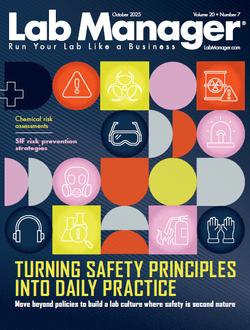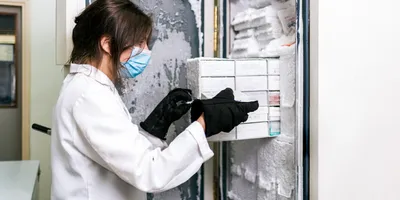Test tubes are an essential tool in laboratories worldwide, used for conducting experiments, handling chemical reactions, and storing biological samples. Whether you're a seasoned lab professional or new to laboratory equipment, understanding the various types of test tubes, their uses, and best practices for care and maintenance is crucial. In this guide, we’ll explore everything you need to know about test tubes, from their applications to purchasing considerations.
What Are Test Tubes Used For?
Test tubes serve multiple functions in scientific and industrial settings, ranging from chemical experimentation and sample storage to specialized applications in microbiology and biochemistry. Their design makes them versatile tools for mixing, heating, and observing reactions, and they are widely used in educational settings, research facilities, and manufacturing processes. Due to their adaptability, test tubes remain an essential component in both routine lab procedures and advanced scientific investigations. They are commonly used in:
- Chemical Reactions: Test tubes provide a controlled environment for mixing and observing chemical reactions.
- Sample Storage: Biological and chemical samples are often stored in test tubes due to their compact size and durability.
- Heating and Cooling Solutions: Heat-resistant glass test tubes are ideal for experiments requiring temperature changes.
- Centrifugation: Many test tubes are designed to fit into centrifuges to separate substances based on density.
- Microbiological Cultures: In microbiology, test tubes are used to grow bacterial and fungal cultures in nutrient media.
- Educational Experiments: Schools and universities utilize test tubes in laboratory courses to teach basic and advanced scientific concepts.
Glass Test Tubes vs. Plastic Test Tubes: Key Differences
Test tubes are available in both glass and plastic varieties, each with its advantages and limitations. Understanding these differences can help you select the right test tubes for your application.
Glass Test Tubes
Glass test tubes are made from borosilicate or soda-lime glass, offering superior chemical resistance. They are resistant to extreme temperatures, making them ideal for heating applications. Glass test tubes provide excellent visibility for observing reactions and can be cleaned and sterilized for repeated use. They are commonly used for chemical reactions, heating substances, and experiments requiring a sterile environment. However, they are fragile and can break upon impact.
Plastic Test Tubes
Plastic test tubes are typically made from polyethylene (PE), polypropylene (PP), or polystyrene (PS). They are more impact-resistant than glass and less prone to breaking. However, they are less heat-resistant compared to glass, as some plastics can only handle moderate temperatures. Plastic test tubes are generally more affordable and available in bulk, making them suitable for sample storage, centrifugation, and disposable applications. Their limitations include potential chemical reactivity and reduced reusability.
Key Considerations When Purchasing Test Tubes
When selecting test tubes for laboratory use, consider the following factors:
1. Material Compatibility
Borosilicate glass is ideal for high-temperature and chemically reactive applications, while polypropylene plastic test tubes offer durability and chemical resistance.
2. Size and Volume
Test tubes range from small (5 mL) to large (50 mL or more). Selecting the appropriate size ensures optimal functionality for specific applications.
3. Sterility Requirements
Pre-sterilized test tubes are necessary when working with microbiological samples to prevent contamination.
4. Closure Type
Open-ended test tubes allow for quick access, while capped test tubes prevent contamination and evaporation.
5. Compatibility with Equipment
Ensure that test tubes fit securely in racks, centrifuges, or heating blocks to facilitate smooth laboratory operations.
Proper Care and Maintenance of Test Tubes
To extend the lifespan of test tubes and maintain their effectiveness, follow these best practices:
Cleaning Procedures
Glass test tubes should be rinsed immediately after use, washed with detergent, and sterilized using autoclaving or dry heat. Plastic test tubes, depending on their material, may be autoclaved, but some are designed for single use and should be disposed of properly.
Storage Recommendations
Test tubes should be stored in racks to prevent breakage and contamination. Glass test tubes, in particular, should be kept away from impact-prone areas to reduce the risk of damage.
Lab Quality Management Certificate
The Lab Quality Management certificate is more than training—it’s a professional advantage.
Gain critical skills and IACET-approved CEUs that make a measurable difference.
Handling Guidelines
When handling heated test tubes, always use appropriate tongs or gloves to prevent burns or accidents. Additionally, plastic test tubes should not be exposed to harsh chemicals that may degrade the material.
Frequently Asked Questions (FAQs)
1. What is the best material for test tubes?
The best material depends on your application. Glass test tubes, particularly borosilicate glass, are ideal for high-temperature and chemical-resistant applications. Plastic test tubes, such as polypropylene, are best for impact resistance and cost-effectiveness.
2. Can test tubes be reused?
Glass test tubes can be cleaned, sterilized, and reused multiple times, making them cost-effective in the long run. Plastic test tubes, however, are often designed for single use, though some types like polypropylene can be autoclaved for reuse.
3. How should I clean test tubes properly?
Glass test tubes should be rinsed immediately after use, washed with detergent, and sterilized by autoclaving or dry heat. Plastic test tubes may require milder cleaning methods and should be disposed of if not reusable.
4. What size test tube should I use?
The size of the test tube depends on the volume of liquid or sample you are working with. Standard sizes range from 5 mL to 50 mL, with larger tubes used for higher-volume applications.
Final Thoughts
Test tubes are indispensable tools in laboratories, serving a variety of purposes across scientific disciplines. Whether opting for glass or plastic, selecting the right test tube depends on your specific needs regarding temperature resistance, chemical compatibility, and reusability. By following proper care and handling procedures, you can ensure the longevity and effectiveness of your laboratory test tubes.
When purchasing test tubes, consider factors such as material, size, sterility, and compatibility with existing equipment to make the best choice for your laboratory needs. With the right selection and maintenance practices, test tubes will remain a reliable component of your scientific work.
This content includes text that has been generated with the assistance of AI. Lab Manager’s AI policy can be found here












